Cenotes, whose name in Mayan means “sacred well” (from the Mayan words dz’onot or ts’ono’ot), were far more than simple water reserves for the Mayan civilization, which thrived in the Yucatán Peninsula between 2000 BC and 1500 AD.
These unique geological formations were deeply rooted in their worldview, serving as spiritual portals to the underground realm of Xibalba and as central sites for rituals essential to their survival and their cosmology. Cenotes were truly important to the Mayans!
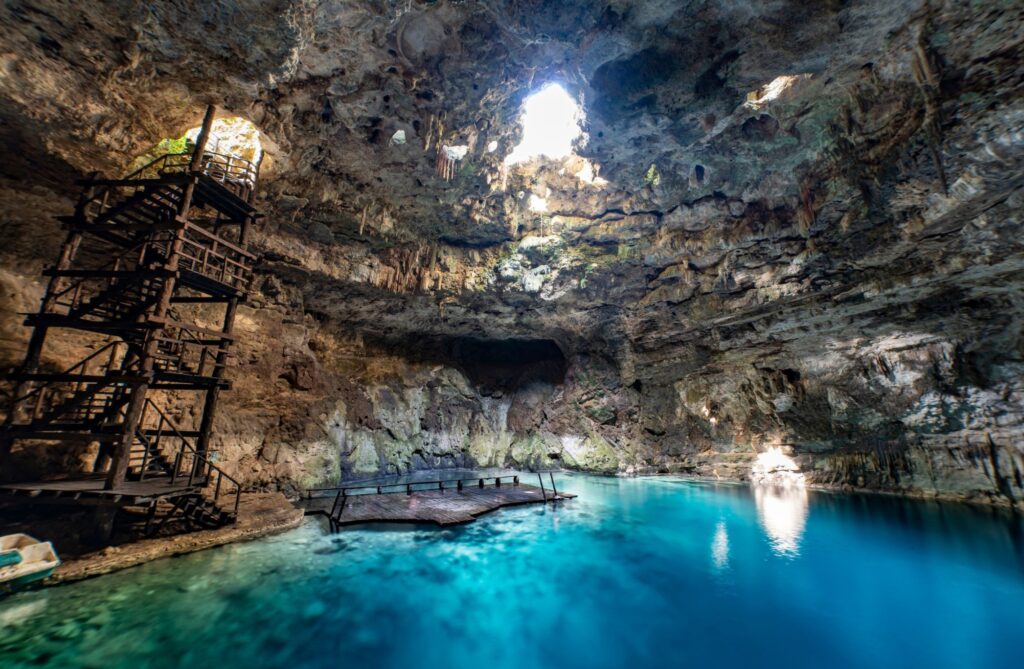
Religious and ceremonial role of cenotes in Mayan culture
For the Mayans, cenotes were not just water-filled holes. They were sacred places, gateways to Xibalba, the underworld of gods and ancestors.
They saw these wells as special places where the world of the living touched the world of spirits. According to their beliefs, some deities also lived there.
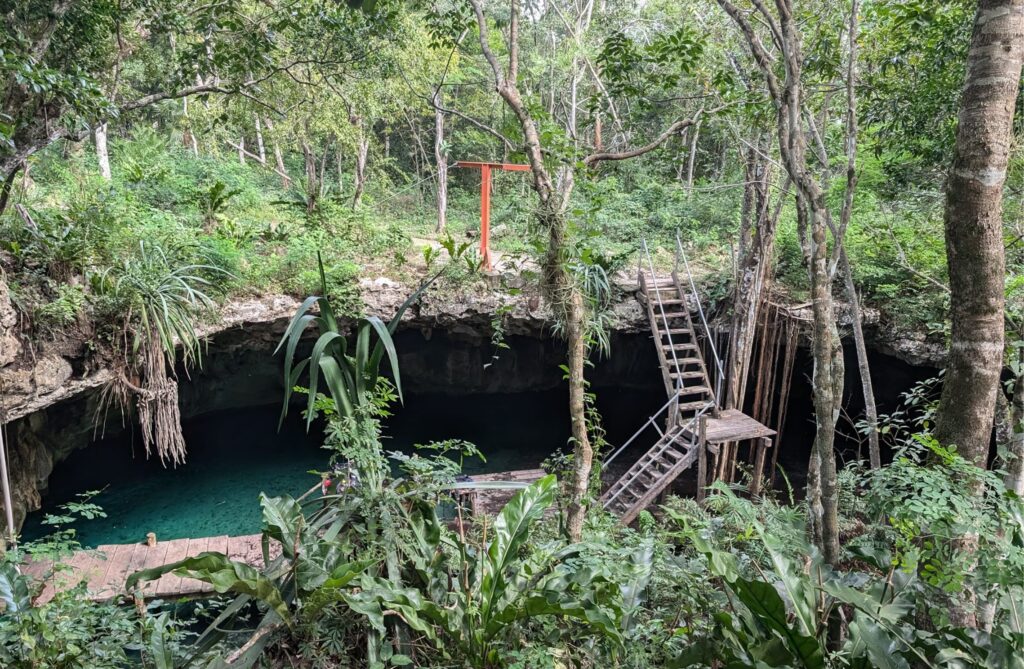
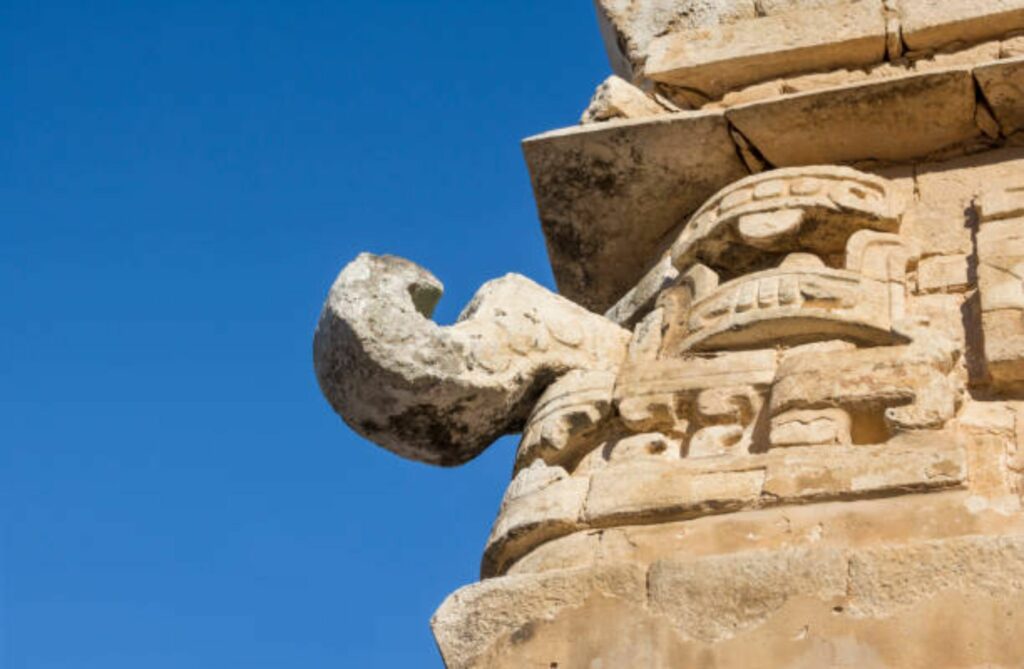
That is why the Mayans made offerings and held ceremonies there. They hoped to communicate with their gods, especially Chaac, the god of rain, whom they believed lived in these deep waters.
What specific rituals did the Mayans perform in cenotes
Mayan rituals in cenotes combined material offerings, human sacrifices, religious ceremonies, and purification practices, all aimed at ensuring prosperity, rain, and divine protection while maintaining a close connection with the world of gods and ancestors.
Archaeological excavations have confirmed these ancient beliefs and practices.
Major archaeological discoveries in cenotes
Cenotes have been the site of major archaeological and scientific discoveries. In 2007, archaeologists uncovered the remains of a prehistoric young woman, estimated to be around 13,000 years old, in the Hoyo Negro cenote. She was named “Naia.”
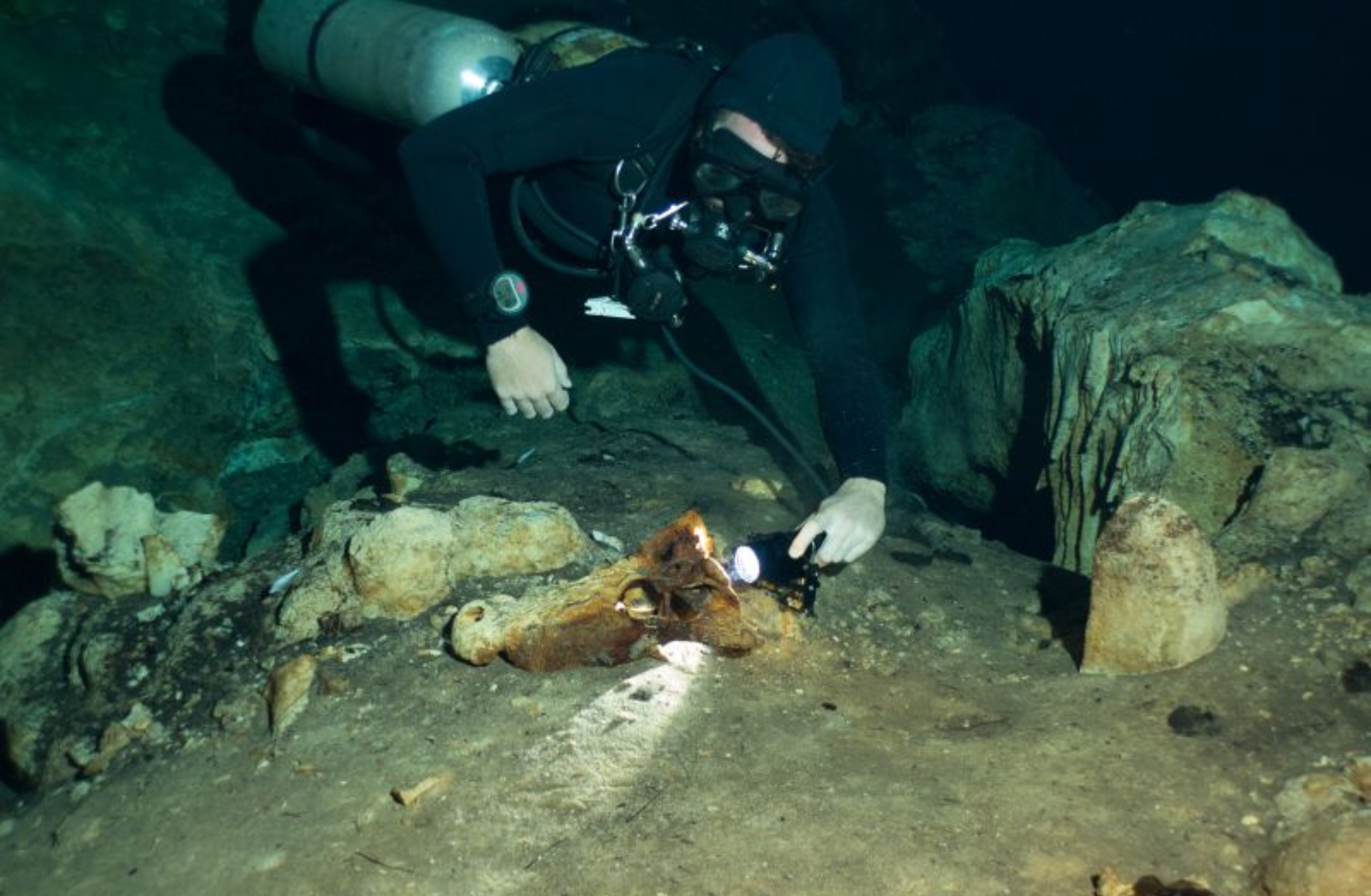
This discovery was crucial for our understanding of human migration in the Americas, representing the oldest human skeleton ever found on the continent.
In addition, cenotes provide a valuable record of past climate changes. The sediments they contain allow scientists to reconstruct the environmental history of the region over thousands of years.
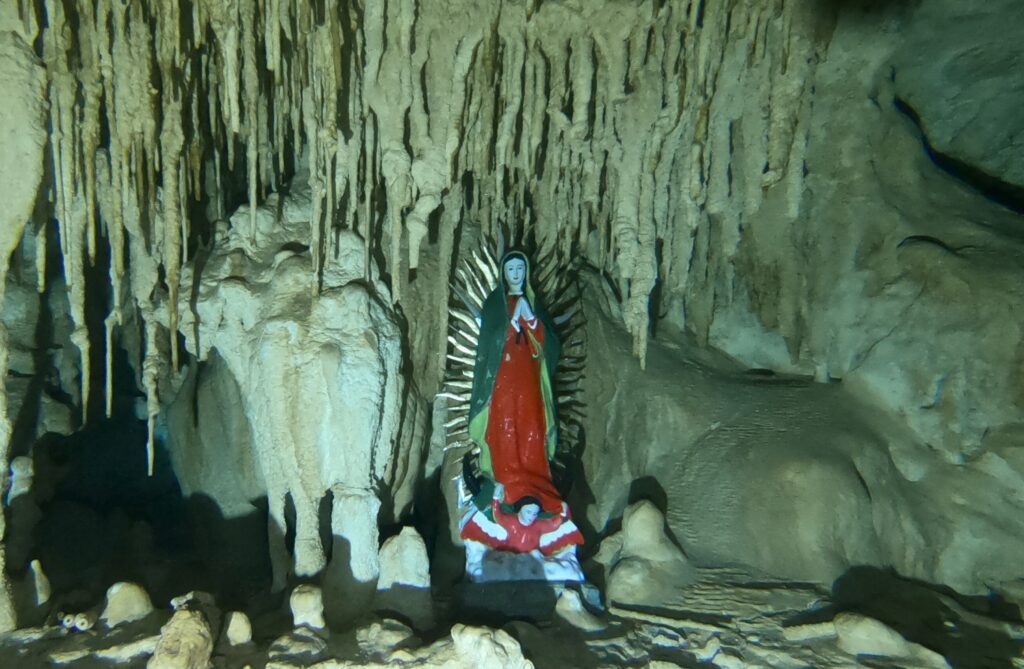
True windows into the past, they have revealed traces of ancient life, including mammoth bones and fossils of sea snails and corals. These discoveries are crucial for better understanding ancient ecosystems and the region’s lost biodiversity.
Cenotes therefore serve as unique geological and biological archives.
Cenotes as vital water sources for the Mayans
In the Yucatán Peninsula, where there were virtually no surface rivers due to the highly porous limestone ground, cenotes were the only accessible sources of fresh water.
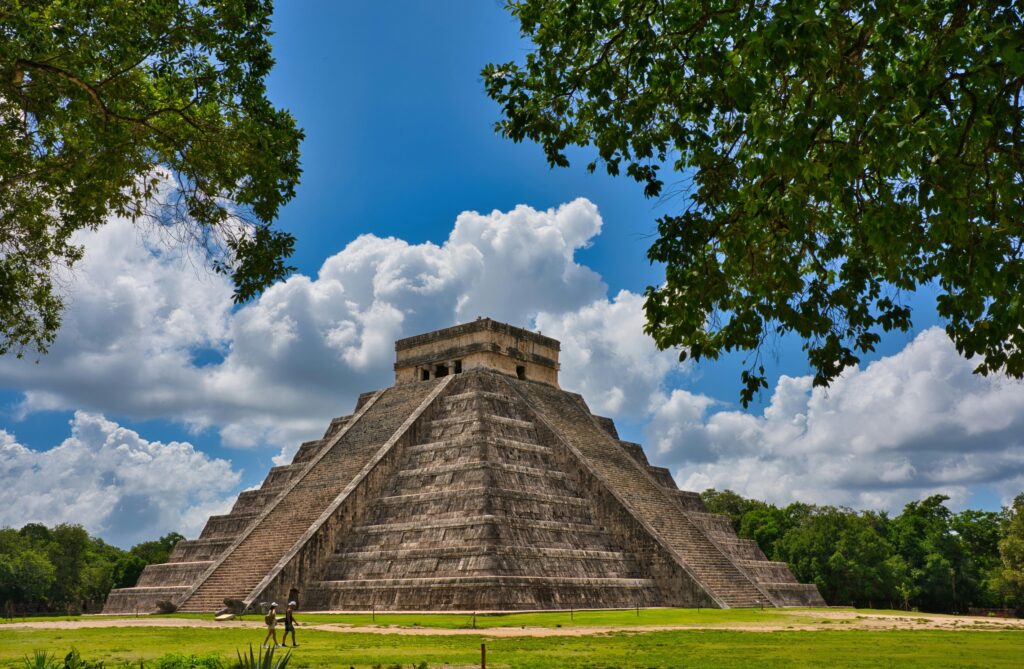
They were therefore essential for drinking, agriculture, irrigation, and the establishment of Mayan cities such as Chichén Itzá, which could not have existed without them.
Moreover, control over cenotes also strengthened the power of rulers and major cities.
Cenotes: ancient community and cultural centers
Mayan villages and urban centers often developed around cenotes, which played a central role in daily life. Beyond their vital function as sources of drinking water, these natural wells were true gathering places for the community.
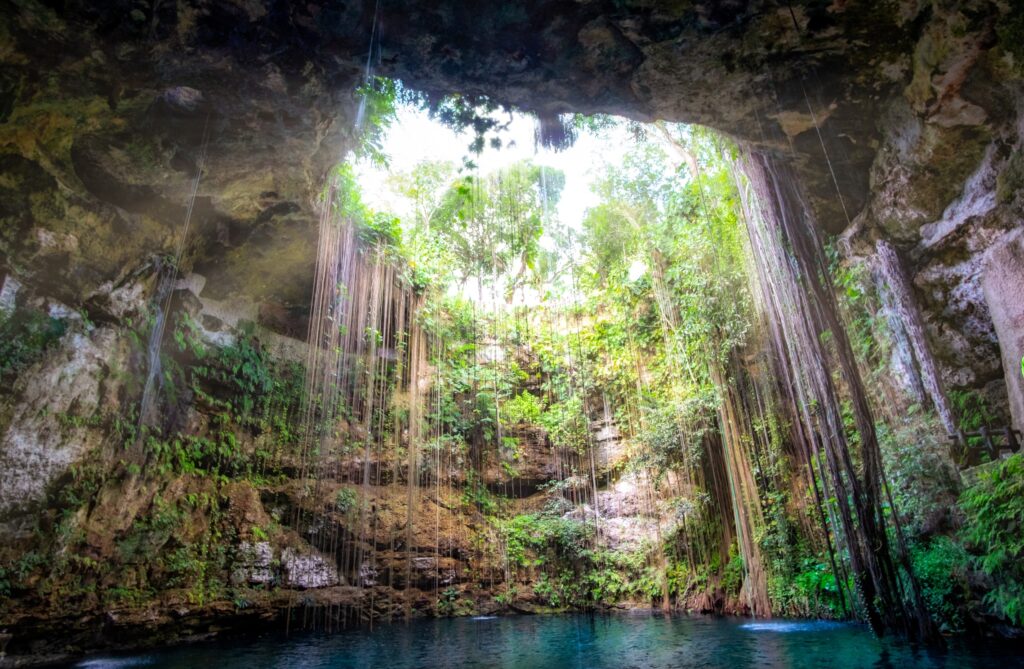
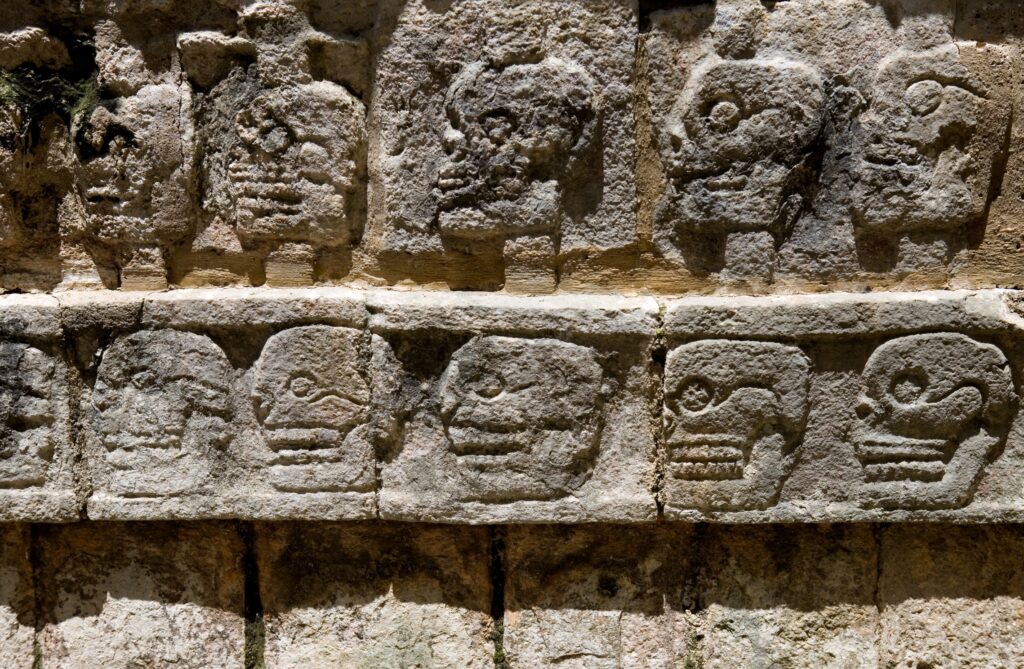
Homes, plazas, and even temples were often built around cenotes, as seen in Valladolid.
This shows how important these natural wells were to the Mayans. They were not just a source of water but also a central place in village life, for ceremonies, gatherings, and daily activities.
Cenotes today
Every year, cenotes attract thousands of visitors for swimming, snorkeling, or cenote diving.
Sites like Dos Ojos, Gran Cenote, The Pit, and Angelita offer unique experiences thanks to the clarity of the water, the biodiversity, and the spectacular light effects.
Tourism has become a major source of income, but it also puts pressure on these fragile ecosystems.
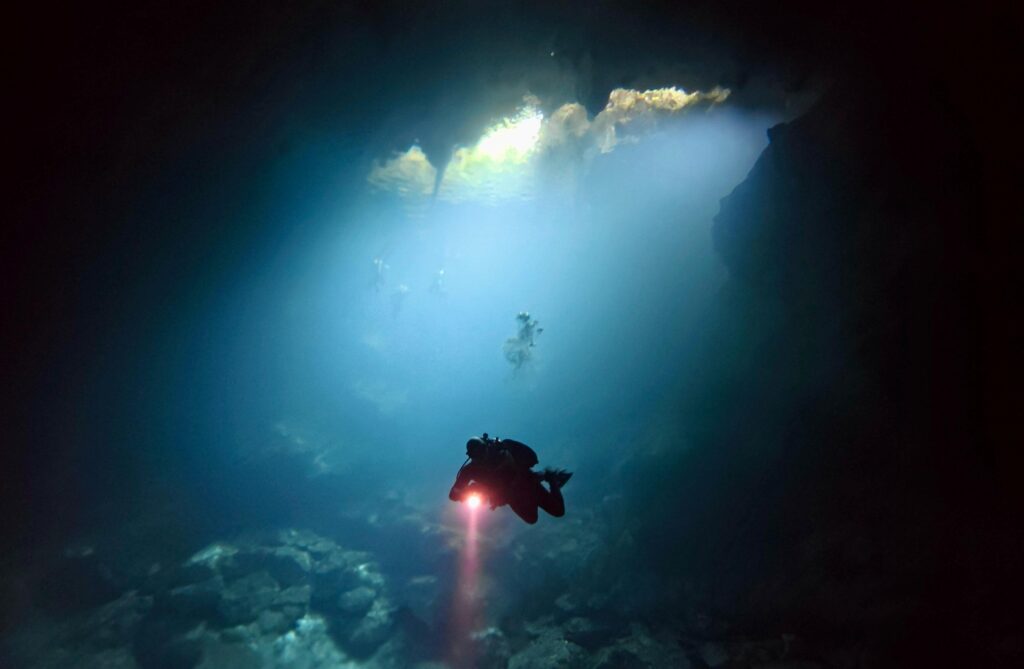
Today, cenotes are must-visit sites for divers, whether beginners or experts in cave diving. The rock formations, haloclines, and unique diving conditions, especially at places like The Pit and Angelita, offer rare sensations, sometimes described as spiritual.
To face threats such as pollution and overcrowding, Mexico has implemented protection measures including nature reserves, regulated access, and awareness efforts for responsible visits.
Protecting cenotes means preserving a unique natural and cultural heritage, for today and for the future.
